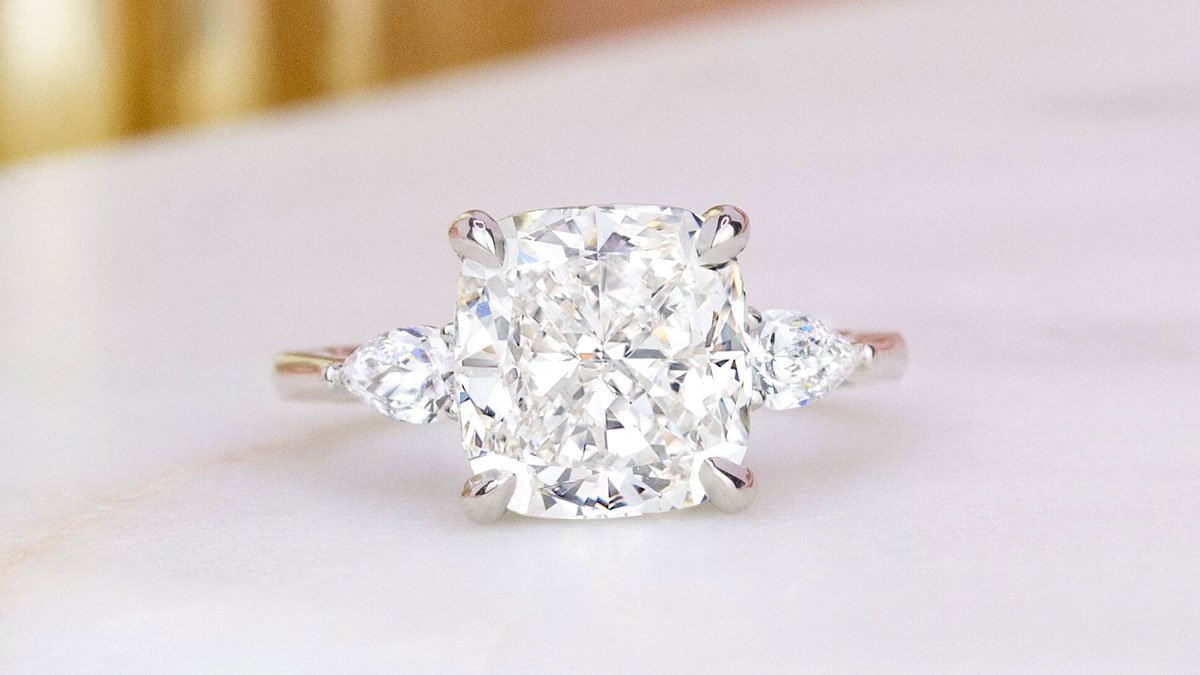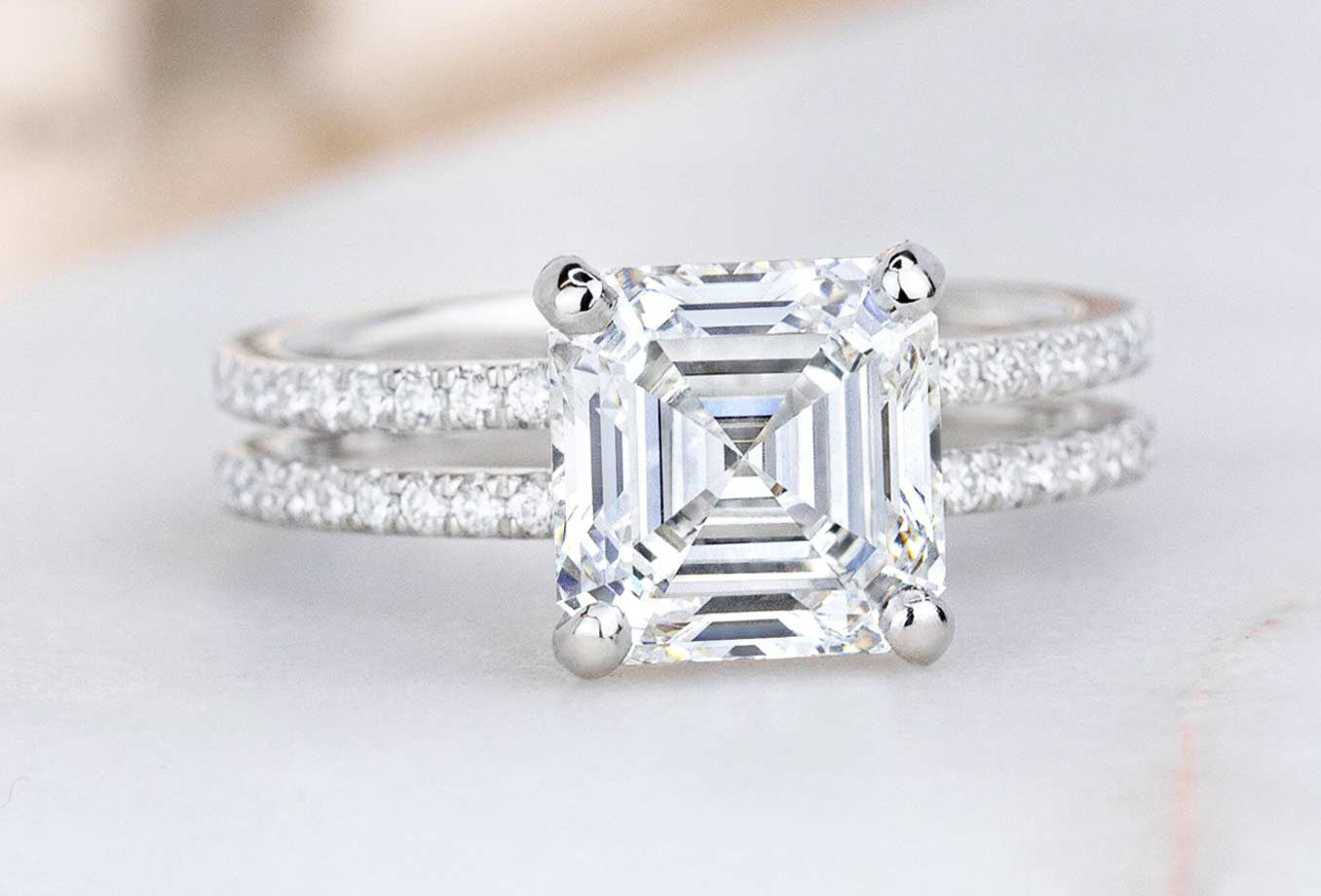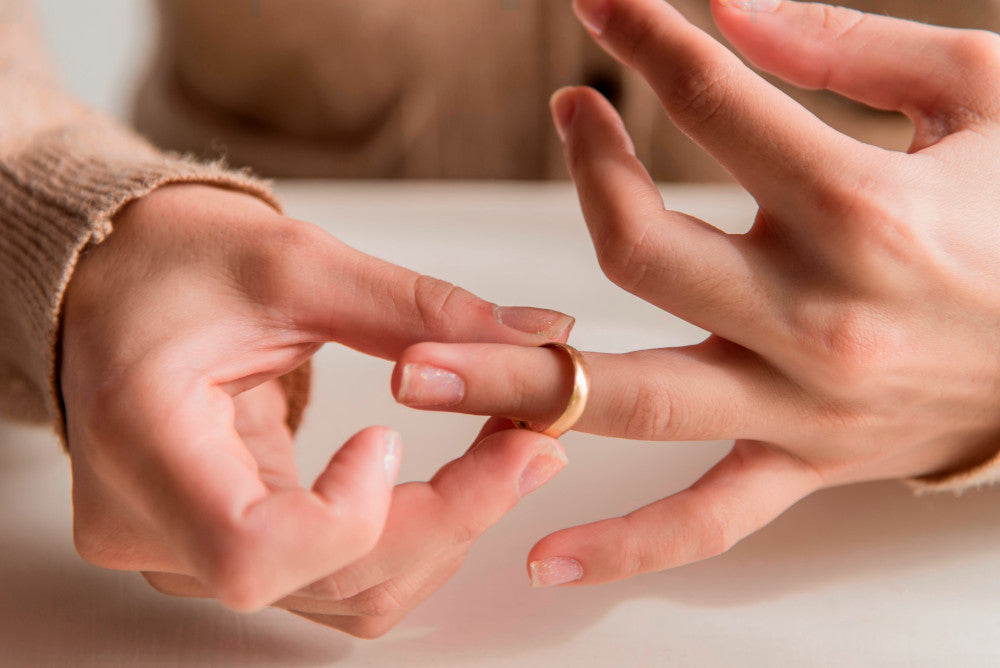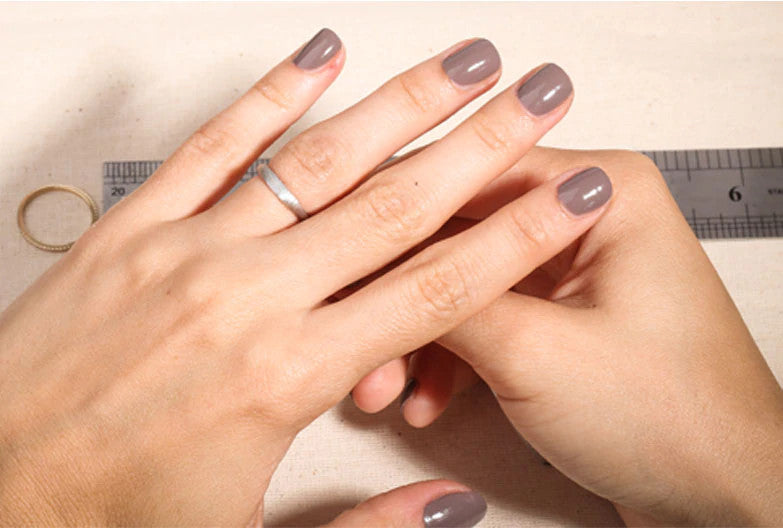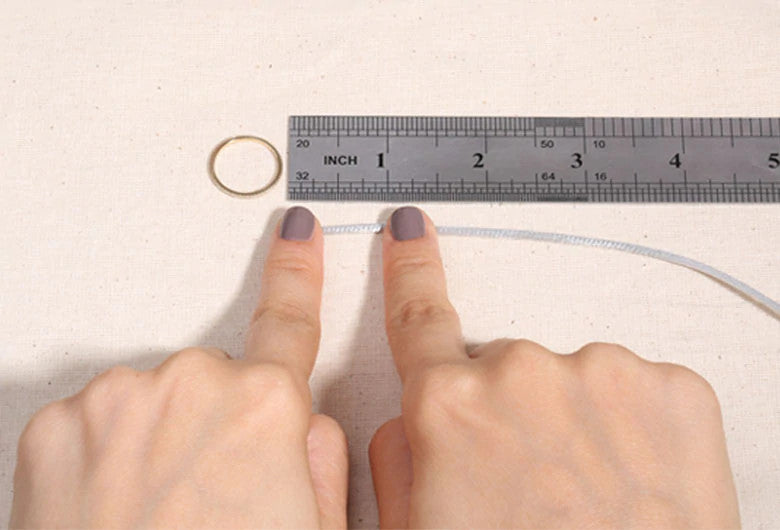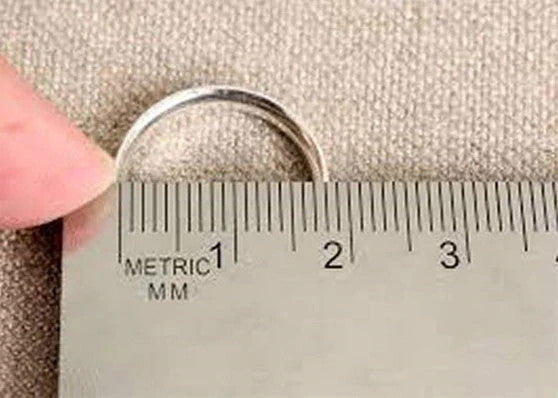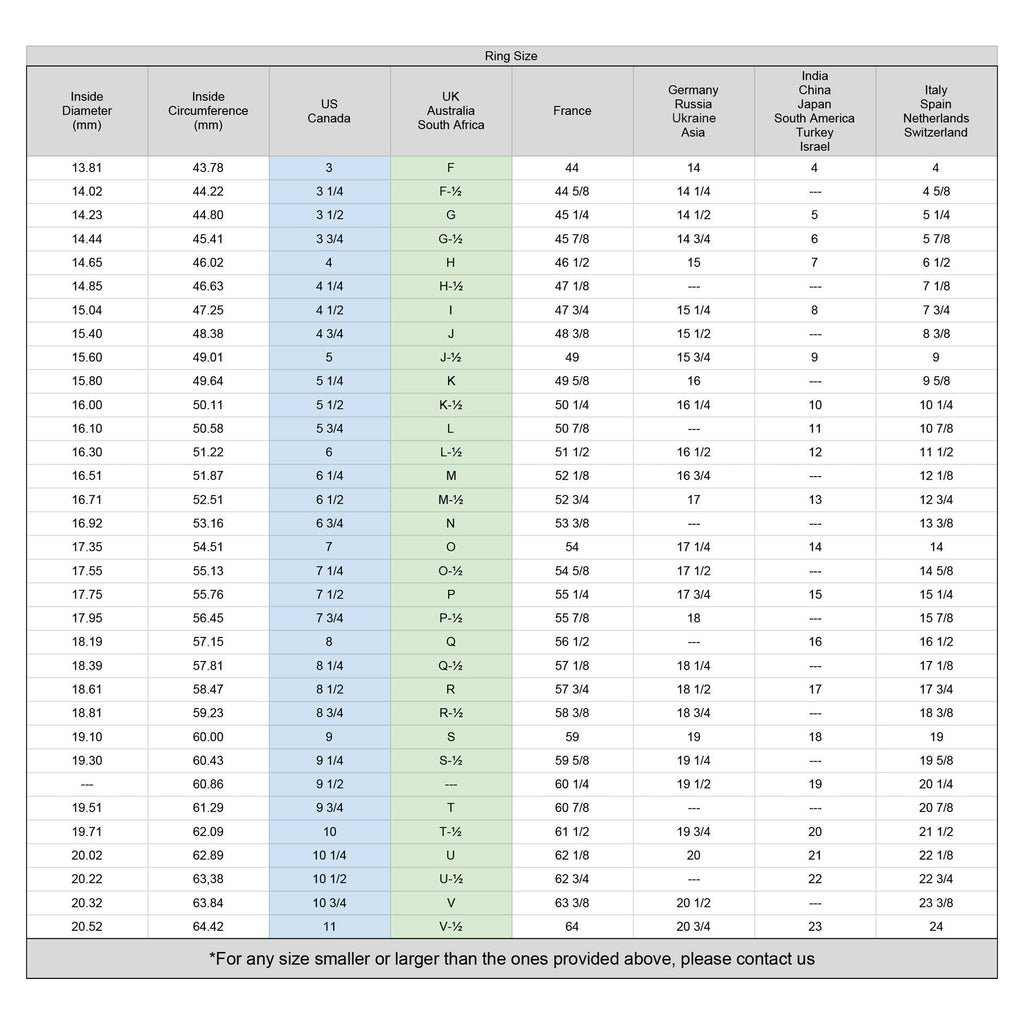Why Is A Diamond’s Cut Important?
Diamond cut is one of the most essential elements when you're selecting a diamond. The Cut of a diamond doesn't refer to shape, but the balance between symmetry, proportion and polish. What makes a diamond beautiful is cut is directly proportional to diamond’s overall allure and beauty. The more beautifully a diamond's been cut, the greater will be diamond’s ability to reflect and refract light. Refract is rainbow colors we see when light goes through it and the light rays break into all the colors same as a rainbow. Diamond cutters are well known over the years how light travels / moves through the diamond hence they cut specific / accurate proportions and angles to show a diamond's brilliance.
Before diamonds are cut and worked on, when diamonds are mined through earth they resemble a shape which looks like two square pyramids arranged in an eight-sided octahedral shape in simple words 2 pyramids that are stuck together on the flat side. Point-cut diamonds are still in its natural shape and polished. While it's still beautiful and sparkling, the cut only maximizes the effects of light moving through the stone by a little there are still a lot of other factors to a diamond's beauty.
There are three factors that impact a diamond's ability to reflect light : table, width, and depth. The table size and depth of a diamond are proportional to the the diameter of the diamond which impacts the light to return through the diamond and give it more sparkles. Correspondingly, accurate width assures that light hits critical angles when passing through it to show greater refraction. A well-polished and cut diamond is proportioned in a way so that majority of the light that enters the diamond exits through the top, showing most reflection and balancing the white light which is also known as brilliance with intense flash of colorful fire / rainbow in other words also known as dispersion.
Vice Versa, if a diamond is cut even a few degrees out of proportion it can leak the light outside the bottom of diamond rather than reflect it back up towards the table (front face of the diamond), a phenomenon also known as light leakage. The leak of light makes diamond with poor light performance, dull looking and faint brilliance and also a dark table / center of the diamond that hides its natural sparkle and potential.

Fair
Fair quality cut that reflects some of the light while maximizing it's weight / size. While it might not be as brilliant as a good cut, still a good quality diamond.

Good
A premium quality diamond is cut for optimum size without sacrificing it's beauty of quality. It reflects most of the light back that enters the diamond.

Very Good
Superior quality cut reflects practically as much light as ideal cut although at a considerably lower cost.

Ideal
Exquisite quality is cut to create an excellent combination of fire and brilliance. Reflects all the light that enters the diamond.

Super Ideal
Cut to the most accurate standards. These diamonds have most desired dimensions and are proportioned to reflect back the maximum possible light.
What is Brilliance?
The sheer allure of a diamond lies in its brilliance. Diamond cutters realize that for a diamond to truly dazzle, it must radiate and reflect light from the facets back toward the viewer.
There are two types of facets: physical and virtual. Physical facets are cut into the stone since they reflect and bounce light towards the viewer, it also appears that there are many a flashing lights within the diamond, in spite of there are only being a limited number of cuts in the stone. These flashes are known as the virtual facets.
Each time the light enters diamond, physical facets send it in different directions, conditional to the angle and tilt. As angle of the light changes, facets interact with each other to send the light back through the table.
The prism like lights combine as brilliant, white light so it exits back through the table and sparkle. The more physical facets a diamond has, the more possible it is for light to create a dazzling display of flashing lights. Masterfully and impeccably cut diamonds determine superb brilliance because they bounce light off multiple facets / surfaces, accomplishing a multiplier effect that reflects far more than the sum of its parts.
The sheer allure of a diamond lies in its brilliance. Diamond cutters realize that for a diamond to truly dazzle, it must radiate and reflect light from the facets back toward the viewer.
There are two types of facets: physical and virtual. Physical facets are cut into the stone since they reflect and bounce light towards the viewer, it also appears that there are many a flashing lights within the diamond, in spite of there are only being a limited number of cuts in the stone. These flashes are known as the virtual facets.
Each time the light enters diamond, physical facets send it in different directions, conditional to the angle and tilt. As angle of the light changes, facets interact with each other to send the light back through the table.
The prism like lights combine as brilliant, white light so it exits back through the table and sparkle. The more physical facets a diamond has, the more possible it is for light to create a dazzling display of flashing lights. Masterfully and impeccably cut diamonds determine superb brilliance because they bounce light off multiple facets / surfaces, accomplishing a multiplier effect that reflects far more than the sum of its parts.
What is Fire?
Light is made of spectrum colors that blend into what we observe as white. As the light waves travel through the air, they move especially fast until they hit the surface that slows them down.
Diamonds are exceptionally good at slowing down light, splitting it, and shows a shimmering spectrum of colors. As white light enters the stone's table, it refracts and bends from the mirror-like facets in limitless directions, regaining speed.
The name of this phenomenon is known as dispersion, or is commonly called fire. It creates a display of rainbow colors that adds beauty to a stone. High quality diamonds show flashes of color, glinting sparks of orange, orange, red, green, yellow, blue, and purple as light bounces back over the cut facets. This effect gives diamonds liveliness.
Diamonds must be proportionally and precisely cut for the light to hit the correct angles at which the dispersion is realized. Inaccurate cuts do not scatter and refract light efficiently, allowing the white light to leak instead of breaking into individual colors amongst the facets.
Light is made of spectrum colors that blend into what we observe as white. As the light waves travel through the air, they move especially fast until they hit the surface that slows them down.
Diamonds are exceptionally good at slowing down light, splitting it, and shows a shimmering spectrum of colors. As white light enters the stone's table, it refracts and bends from the mirror-like facets in limitless directions, regaining speed.
The name of this phenomenon is known as dispersion, or is commonly called fire. It creates a display of rainbow colors that adds beauty to a stone. High quality diamonds show flashes of color, glinting sparks of orange, orange, red, green, yellow, blue, and purple as light bounces back over the cut facets. This effect gives diamonds liveliness.
Diamonds must be proportionally and precisely cut for the light to hit the correct angles at which the dispersion is realized. Inaccurate cuts do not scatter and refract light efficiently, allowing the white light to leak instead of breaking into individual colors amongst the facets.
What is Scintillation?
Often known as a diamond's "sparkle," scintillation is a dynamic characteristic put together by the exchange of flash scintillation (white light) and fire scintillation (multi-colored light).
When you move a diamond in the light, the facets separate white light into a rainbow of colors, making sparks of light that emerge to dance along the surface of the diamond. This contrasts against the darker, colorful flashes that refract through the facets.
The balance and symmetry between darker and lighter areas create overall sparkle. Much of the scintillation will be lost if light escapes through pavilion and culet without this contrast.
Often known as a diamond's "sparkle," scintillation is a dynamic characteristic put together by the exchange of flash scintillation (white light) and fire scintillation (multi-colored light).
When you move a diamond in the light, the facets separate white light into a rainbow of colors, making sparks of light that emerge to dance along the surface of the diamond. This contrasts against the darker, colorful flashes that refract through the facets.
The balance and symmetry between darker and lighter areas create overall sparkle. Much of the scintillation will be lost if light escapes through pavilion and culet without this contrast.

Table
The flat surface at the top of the diamond

Crown
The top portion of a diamond, from the girdle to the table.

Girdle
The narrow rim around the widest are of a diamond, isolating the pavilion
from the crown. Also referred to as the setting edge, from where the
diamond is held and set in jewelry.

Pavilion
The lower portion of a diamond, from the girdle to the culet.

Culet
The facet or point on the bottom of the diamond's pavilion.

Depth
The height of a gemstone, from culet to the table. Referred to as a percentage of the overall diameter of the gem.
How Are Diamond Cuts Graded?
After 15 years of studying how light interacts with a round brilliant cut diamond, the Gemology Institute of America, or GIA, has explained seven components determining a diamond’s cut grade. These components are brightness, dispersion, scintillation, weight ratio, durability,polish, and symmetry.
When a diamond is graded, each factor is assigned a grade: Excellent,Very Good, Good, Fair, or Poor. The final grade is based on the lowest assessment in any category. For example, if a diamond’s lowest score were “Fair” in durability, despite ranking as “Very Good” in all other components, the final grade would be “Fair.”
Symmetry and polish are exempt from this rule, allowing a diamond with a “Very Good” polish to still rank as “Super Ideal.” Diamonds rated“Excellent” by GIA will fall under Ideal or Super Ideal on the Jalvi & co site.
When Jalvi & Co. evaluates a diamond, we use the GIA grading scale and specific diamond characteristics such as polish and symmetry to distinguish between Ideal and Super Ideal. In cases where the cut grade is not available from a grading laboratory, such as for fancy-shaped diamonds, Jalvi & Co. combines the characteristics above along with depth, table, secondary measurements, and subjective factors to assess the difference in diamond cuts.
Different Types of Diamond Cuts
Super Ideal Diamond Cut
A Super Ideal diamond cut consists of only gems with most desired dimensions & close appropriate proportions that fire the brilliance, scintillation , and dispersion within. This grade determines superior craftsmanship and supremacy in its class.
A Super Ideal diamond cut consists of only gems with most desired dimensions & close appropriate proportions that fire the brilliance, scintillation , and dispersion within. This grade determines superior craftsmanship and supremacy in its class.
Ideal Diamond Cut
To an amateur's eye, a diamond with a grade close Ideal is just as brilliant and fiery as a Super Ideal Diamond. Ideal diamonds might have a low clarity and color grade, but low grade is more likely has small amount of light leakage. This is one of the popular choices for engagement rings because it is visibly identical to Super Ideal diamonds.
To an amateur's eye, a diamond with a grade close Ideal is just as brilliant and fiery as a Super Ideal Diamond. Ideal diamonds might have a low clarity and color grade, but low grade is more likely has small amount of light leakage. This is one of the popular choices for engagement rings because it is visibly identical to Super Ideal diamonds.
Very Good Diamond Cut
Very Good cut diamond will present with a very good light return and exceptional brilliance, as most of the light entering through the table will refract in the way that it is expected. A Very Good cut diamond's proportions offset weight-to-size ratio or undermine the facet balance. This is a very popular diamond cut also, as they reflect almost the same amount of light for a very lower price.
Very Good cut diamond will present with a very good light return and exceptional brilliance, as most of the light entering through the table will refract in the way that it is expected. A Very Good cut diamond's proportions offset weight-to-size ratio or undermine the facet balance. This is a very popular diamond cut also, as they reflect almost the same amount of light for a very lower price.
Good Diamond Cut
Good cut diamonds are ideal for a someone who wants a larger carat, because they leave weight while still reflecting plenty of light. The proportions for a diamond of this grade will be minor imperfect, which allows them to reflect most of the of light. Good diamonds might not be as bright, as the ratios will tend to leave more dark spaces in the stone, giving it a dull look than a comparable gem of a higher grade.
Good cut diamonds are ideal for a someone who wants a larger carat, because they leave weight while still reflecting plenty of light. The proportions for a diamond of this grade will be minor imperfect, which allows them to reflect most of the of light. Good diamonds might not be as bright, as the ratios will tend to leave more dark spaces in the stone, giving it a dull look than a comparable gem of a higher grade.
Fair Diamond Cut
A Fair graded diamond will have a reduction in scintillation and fire, as the balance in-between light and dark areas is non- symmetrical. With light leaking through the pavilion, The brilliance will also be affected. Fair diamonds are likely to have a small carat size, best to be used as side stones since Its hard to notice loss of sparkle and brilliance in smaller size. This gives an option to make rings in a higher total carat count, an adequate light return, and a reduced price point.
A Fair graded diamond will have a reduction in scintillation and fire, as the balance in-between light and dark areas is non- symmetrical. With light leaking through the pavilion, The brilliance will also be affected. Fair diamonds are likely to have a small carat size, best to be used as side stones since Its hard to notice loss of sparkle and brilliance in smaller size. This gives an option to make rings in a higher total carat count, an adequate light return, and a reduced price point.
Poor Diamond Cut
A Poor Diamond Cut has light mostly spill out from the pavilion and culet. When viewed face-up, there are many darkened area where the facets are not able to refract or reflect the light towards the table. Jalvi & Co. does not carry Poor cut diamonds.
A Poor Diamond Cut has light mostly spill out from the pavilion and culet. When viewed face-up, there are many darkened area where the facets are not able to refract or reflect the light towards the table. Jalvi & Co. does not carry Poor cut diamonds.
| super Ideal | Cut to the most exacting standards. These diamonds have the most desirable dimensions and are proportioned to return the maximum possible light. |
|---|---|
| Ideal | Exquisite quality cut to create the optimal combination of brilliance and fire. Reflects nearly all light that enters the diamond. Top 3% of diamond quality based on cut. |
| Very good | Superior quality cut that reflects nearly as much light as the ideal cut while at a substantially lower cost. |
| good | Premium quality cut to optimize the size without sacrificing quality or beauty. Reflects most light that enters. |
| Fair | Adequate quality cut that reflects some light while maximizing weight. While not as brilliant as a good cut, still a quality diamond. |
| Poor | Not carried by Jalvi & Co. |
How Diamond Cuts Affect Price
The cut is the determining factor for the overall beauty of a diamond, so it comes with a higher grade with a more significant price tag.
Often, the lower quality in the clarity, color, and carat are overcome by a beautiful cut. Masterfully made facets create incredible reflections / refractions of light that mask inclusions and make diamond appear a little larger than it actually is.
The cut is the determining factor for the overall beauty of a diamond, so it comes with a higher grade with a more significant price tag.
Often, the lower quality in the clarity, color, and carat are overcome by a beautiful cut. Masterfully made facets create incredible reflections / refractions of light that mask inclusions and make diamond appear a little larger than it actually is.
How Diamond Cuts Affect Sparkle
Sparkle, or the contrast between white light and the dispersed colored light within the gem, gives a diamond character. It's the wow factor that draws the eye from across the room, creating a dazzling display as the seemingly endless facets create a dance of light within the diamond.
When cutting a stone, careful attention must be paid to the complex interactions between the table, the crown's angle, the pavilion's depth, and the total depth. When properly calculated, with appropriate angles and well-defined proportions, the flashes of reds, blues, oranges, greens, and yellows enhance the gleaming, white brilliance.
Sparkle, or the contrast between white light and the dispersed colored light within the gem, gives a diamond character. It's the wow factor that draws the eye from across the room, creating a dazzling display as the seemingly endless facets create a dance of light within the diamond.
When cutting a stone, careful attention must be paid to the complex interactions between the table, the crown's angle, the pavilion's depth, and the total depth. When properly calculated, with appropriate angles and well-defined proportions, the flashes of reds, blues, oranges, greens, and yellows enhance the gleaming, white brilliance.
